In this guide, we unveil the top 10 places to visit in Varanasi, along with insights on how to reach this ancient city and recommendations for accommodation that complement the unique charm of each location.
Introduction:
Varanasi, the spiritual heart of India, is a city steeped in history, culture, and divine mystique. As the holiest of the seven sacred cities in Hinduism, Varanasi attracts pilgrims, scholars, and travelers seeking a profound connection with the spiritual essence of India.
List of top 10 places to visit in Varanasi are:
1. Kashi Vishwanath Temple, Varanasi:
Nestled on the banks of the sacred Ganges River in the heart of Varanasi, the Kashi Vishwanath Temple stands as a beacon of spirituality and devotion. Revered as one of the holiest Hindu temples, this ancient shrine is dedicated to Lord Shiva, the presiding deity of Varanasi, also known as Kashi. With its towering spire and centuries-old history, the Kashi Vishwanath Temple draws pilgrims, seekers, and history enthusiasts alike into its spiritual embrace, offering a glimpse into the profound cultural and religious tapestry of India.
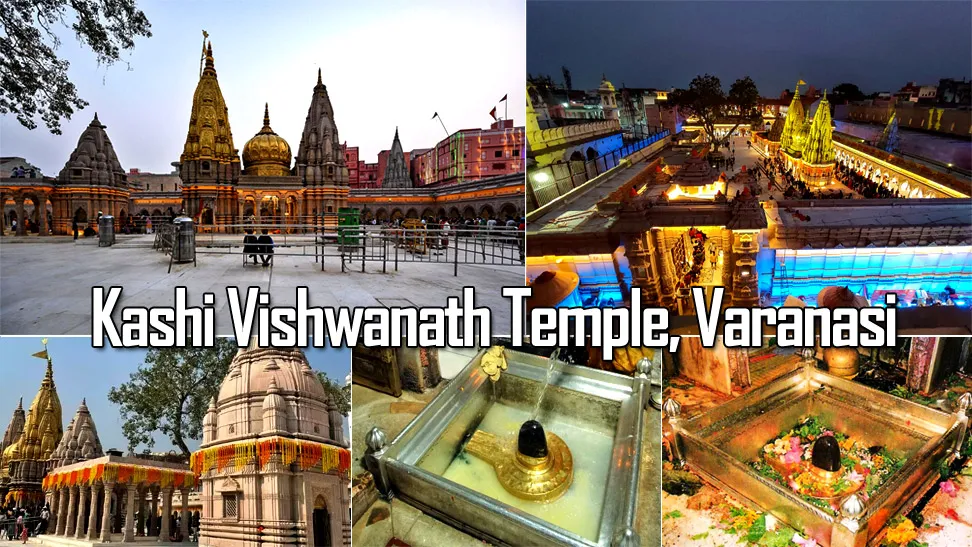
How to Reach: Varanasi has a well-connected airport, Lal Bahadur Shastri International Airport. The city is also accessible by train and road. From the airport or railway station, taxis and auto-rickshaws are readily available.
Accommodation: Opt for hotels near Godaulia, such as Suryauday Haveli or Brijrama Palace, to experience the spiritual energy and architectural beauty of the temple.
2. Dashashwamedh Ghat, Varanasi:
Dashashwamedh Ghat, located along the sacred Ganges River in Varanasi, India, is a revered and bustling ghat that stands as a testament to the spiritual and cultural vibrancy of this ancient city. Steeped in history and mythology, Dashashwamedh Ghat is not only a prominent bathing and ceremonial site but also a lively hub where rituals, religious ceremonies, and the ebb and flow of daily life converge, creating a tapestry of sacred moments against the backdrop of the timeless Ganges.
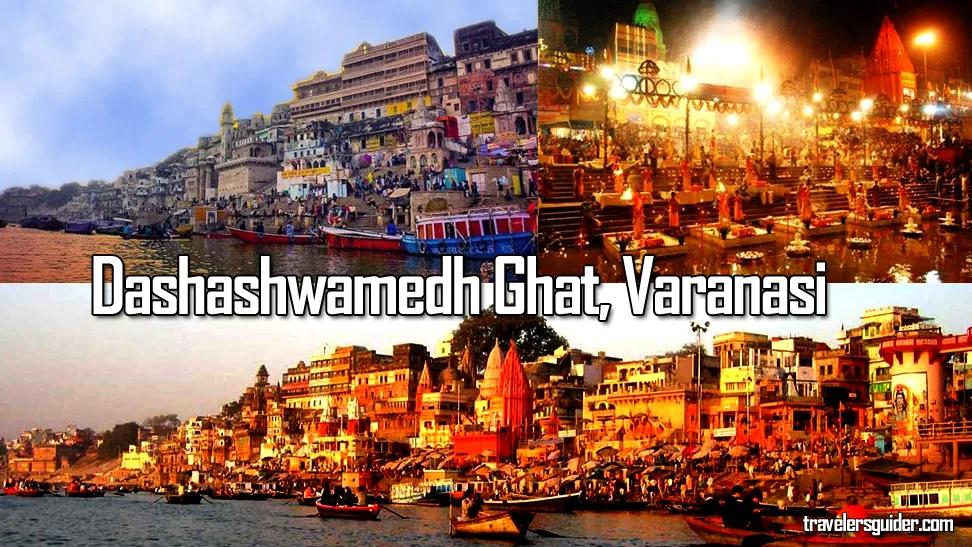
How to Reach: The ghat is centrally located and can be reached by walking or taking a rickshaw from any part of the city.
Accommodation: Consider staying at a guesthouse along the ghats, like Ganpati Guest House or Hotel Ganges View, for a front-row seat to the mesmerizing Ganga.
3. Assi Ghat, Varanasi:
Nestled along the sacred banks of the Ganges in the heart of Varanasi, Assi Ghat stands as a timeless testament to the spiritual and cultural tapestry woven into the city’s ancient fabric. As the gentle currents of the river whisper tales of centuries gone by, Assi Ghat emerges as a soulful rendezvous point where the divine meets the earthly, and where the vibrant pulse of Varanasi echoes through the steps that have borne witness to countless pilgrims, seekers, and the ebb and flow of life itself.
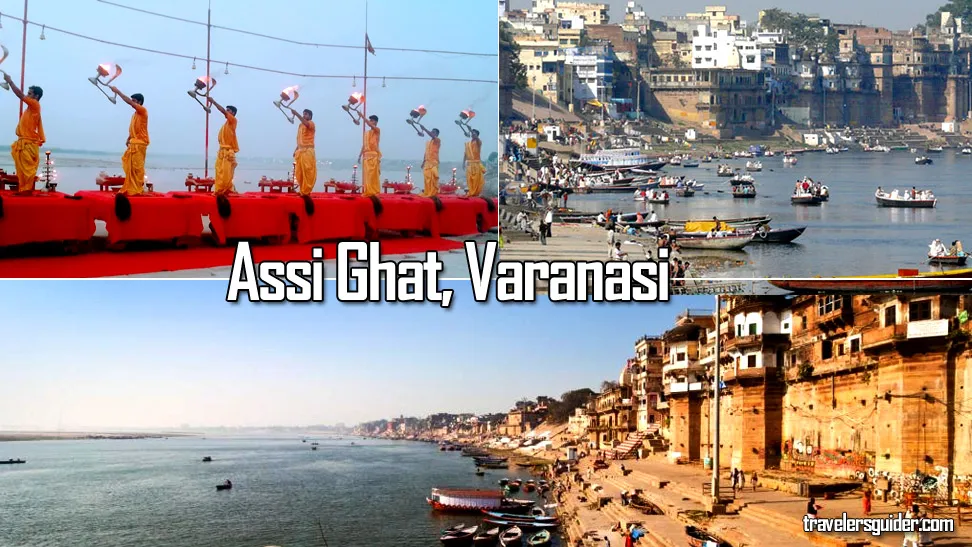
How to Reach: Assi Ghat is easily accessible on foot from the city center. Auto-rickshaws and cycle rickshaws are also convenient modes of transport.
Accommodation: Choose a peaceful stay near Assi Ghat, such as Sita Guest House or Kedar Guest House, to immerse yourself in the spiritual ambiance.
4. Sarnath, Varanasi:
Nestled on the banks of the sacred Ganges River, Sarnath emerges as a timeless tapestry woven with threads of spirituality, history, and cultural resonance. This hallowed ground, located just a stone’s throw away from the ancient city of Varanasi, holds a silent narrative that echoes the teachings of the Buddha and bears witness to the profound transformation of a prince into the enlightened one. As the sun casts its gentle glow on the ancient stupas and serene ruins, Sarnath beckons seekers and wanderers alike to immerse themselves in the quiet contemplation of a place where enlightenment once illuminated the world.
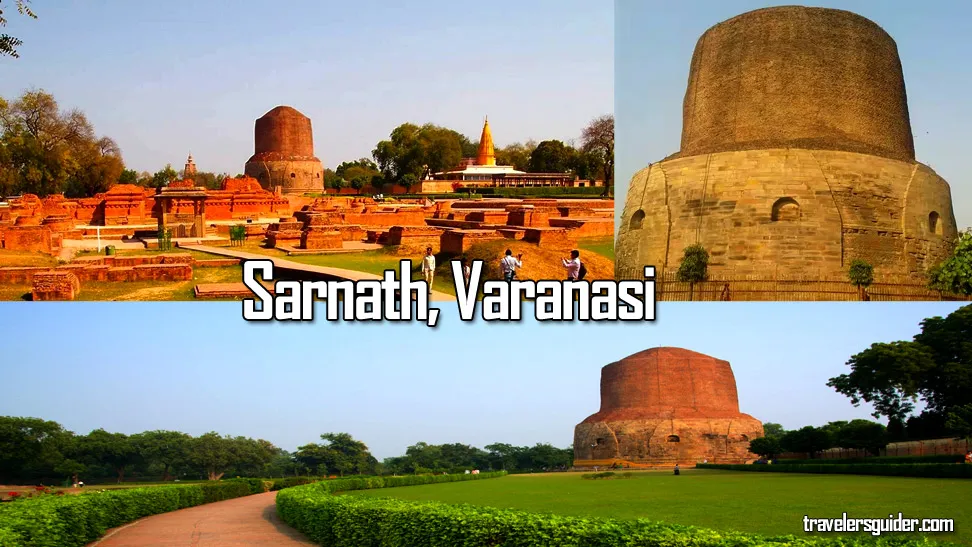
How to Reach: Sarnath is approximately 13 kilometers from Varanasi and can be reached by taxi, auto-rickshaw, or hired car.
Accommodation: Stay in a hotel near Varanasi Junction, like Hotel Clarks or Ramada Plaza JHV, for easy access to both Varanasi and Sarnath.
5. Banaras Hindu University (BHU), Varanasi:
Nestled along the serene banks of the sacred Ganges River, Banaras Hindu University (BHU) emerges as an academic citadel steeped in tradition, innovation, and spiritual resonance. As the sun rises over the vibrant city of Varanasi, BHU stands as a venerable institution, its roots intertwined with the ancient cultural fabric of India. Beyond its academic prowess, BHU is a mosaic of heritage and modernity, where the echoes of Vedic chants harmonize with the cadence of scholarly discussions, creating a dynamic tapestry of knowledge and enlightenment.
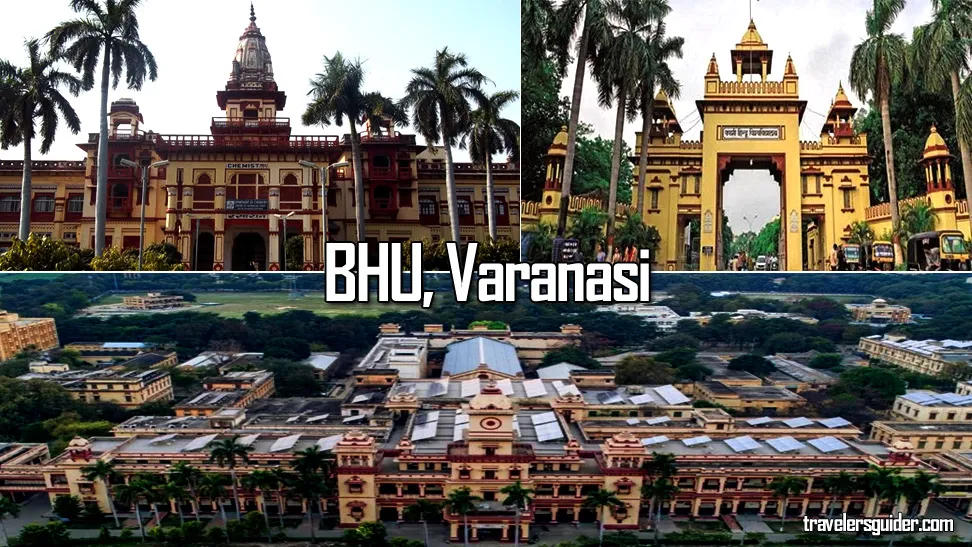
How to Reach: BHU is centrally located in Varanasi and can be reached by taxi, auto-rickshaw, or cycle rickshaw.
Accommodation: Opt for hotels near BHU, such as Hotel Grapevine or Hotel Lara India, for a convenient stay close to the university and other attractions.
6. Manikarnika Ghat, Varanasi:
Nestled along the sacred banks of the Ganges River in the heart of Varanasi, the Manikarnika Ghat stands as a timeless testament to the spiritual tapestry woven into the very fabric of this ancient city. More than just a cremation ground, Manikarnika Ghat is a confluence of life, death, and the eternal cycle of rebirth, where the flames of cremation illuminate the profound spirituality that defines Varanasi. As one steps onto the ghats, they are immersed in a surreal dance of rituals, beliefs, and the perpetual flow of the sacred river, making Manikarnika Ghat an emblem of both mortality and the eternal spirit of this mystical city.
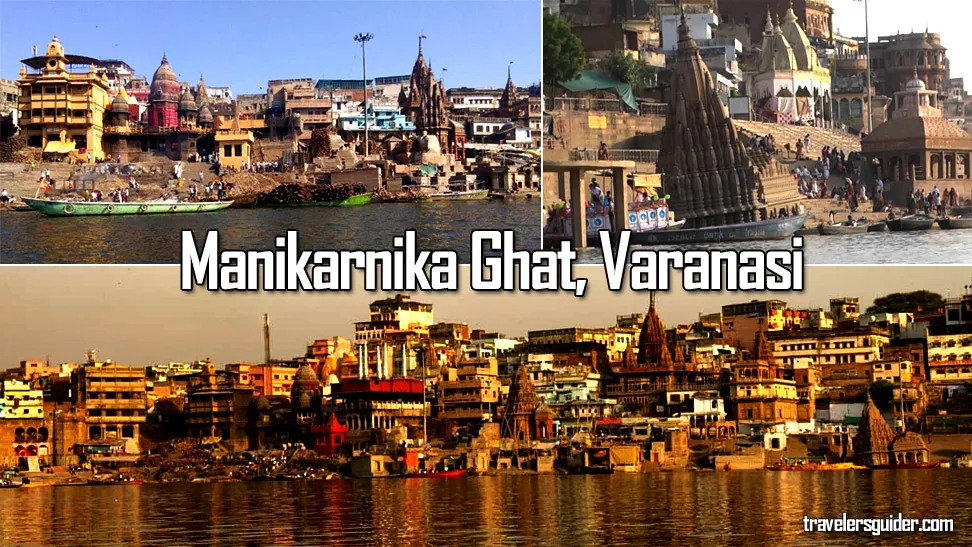
How to Reach: Situated near the city center, Manikarnika Ghat is easily reachable on foot or by rickshaw.
Accommodation: Stay in a guesthouse near Manikarnika Ghat, like Ganga Fuji Home or Scindhia Guest House, to witness the vibrant rituals and ceremonies.
7. Tulsi Manas Mandir, Varanasi:
Nestled on the sacred banks of the Ganges in the spiritual city of Varanasi, the Tulsi Manas Mandir stands as a testament to devotion and cultural richness. As the sun casts its golden hues upon the temple’s intricate architecture, each stone seems to whisper the verses of ancient tales and hymns, inviting pilgrims and seekers alike into a realm where history, spirituality, and artistic splendor converge. This divine abode, dedicated to Lord Rama, is not merely a structure; it’s a sanctuary where the echoes of devotion resonate through the ages, painting a vibrant canvas of Varanasi’s timeless allure.
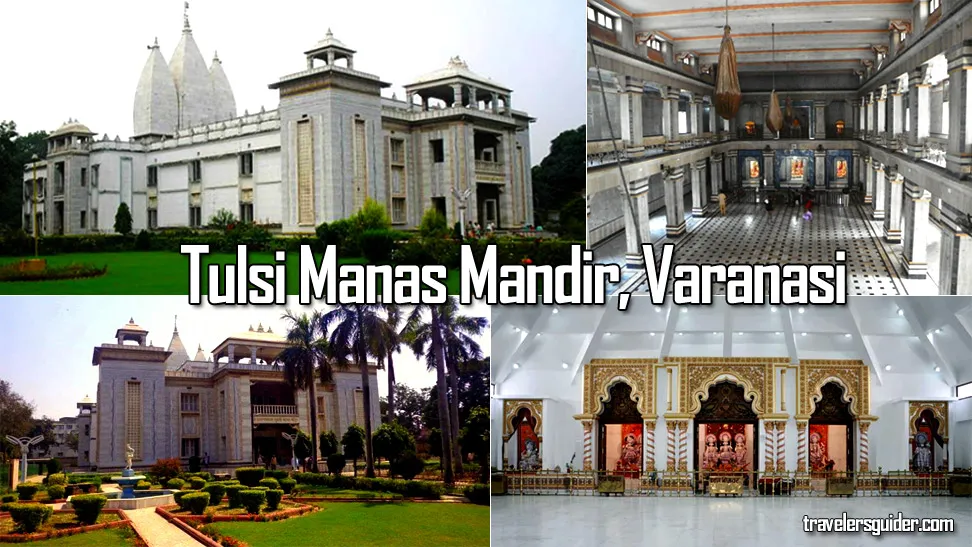
How to Reach: Tulsi Manas Mandir is in the heart of Varanasi and can be reached by various modes of local transportation.
Accommodation: Choose hotels near Durga Kund, such as Hotel Varuna or Hotel Heritage Inn, for proximity to Tulsi Manas Mandir and the surrounding area.
8. Bharat Mata Temple, Varanasi:
Nestled on the banks of the sacred Ganges River in the heart of Varanasi, the Bharat Mata Temple stands as a unique embodiment of national pride and spiritual reverence. Unlike traditional temples dedicated to deities, this distinctive shrine pays homage to Bharat Mata, the personification of Mother India. As visitors step into this hallowed space, they find themselves on a spiritual journey that transcends traditional religious boundaries, celebrating the unity in diversity that defines the very essence of the nation. Join me as we unravel the mystique surrounding the Bharat Mata Temple, a testament to the profound connection between patriotism and spirituality.
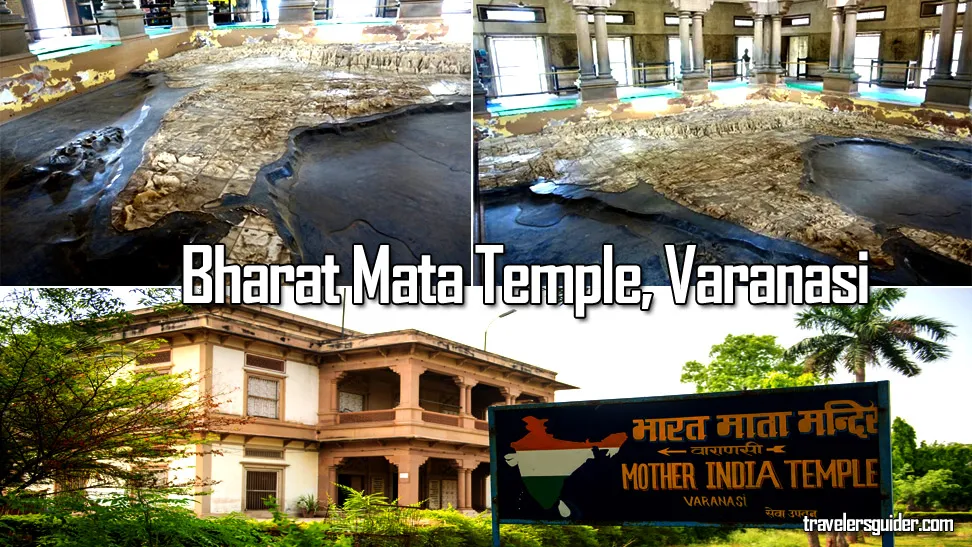
How to Reach: Located near Varanasi Junction, the temple is easily accessible by auto-rickshaw, taxi, or on foot.
Accommodation: Consider staying in a hotel near the railway station, such as Hotel Meraden Grand or Hotel Zeeras, for convenience and ease of travel.
9. Ramnagar Fort, Varanasi:
Nestled on the eastern banks of the sacred Ganges River, the Ramnagar Fort in Varanasi stands as a timeless sentinel, echoing tales of royalty and regality. As the sun casts its golden glow upon the ancient stones, this architectural gem narrates a saga that spans centuries, inviting visitors to traverse the corridors of history and unravel the mystique that enshrouds its weathered walls. The Ramnagar Fort, with its commanding presence, becomes not just a destination but a gateway to the bygone era of Varanasi’s royal legacy.
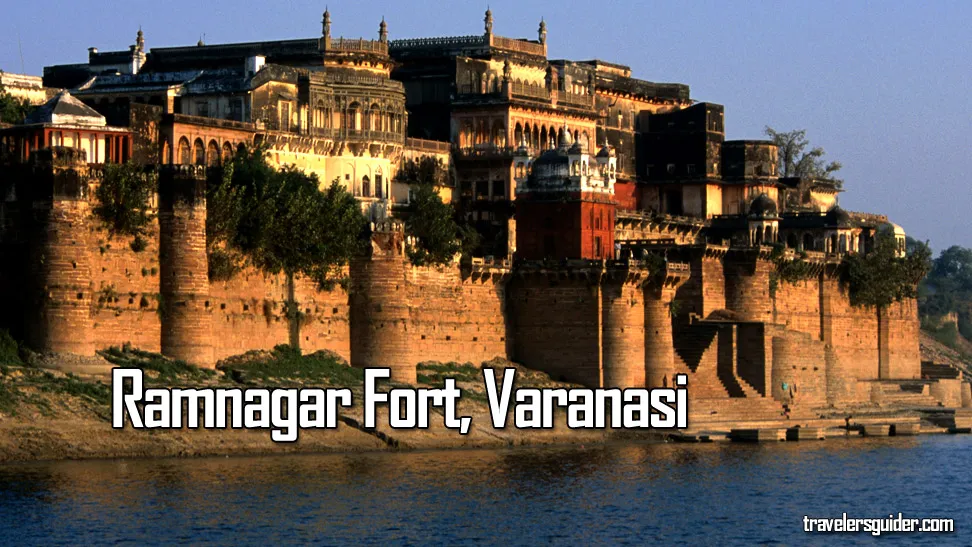
How to Reach: Situated on the eastern bank of the Ganges, Ramnagar Fort is accessible by boat or by crossing the Malviya Bridge.
Accommodation: Choose hotels near Ramnagar Fort, such as Rivatas by Ideal or Palace on Ganges, for a regal stay near this historic site.
10. Durga Temple (Monkey Temple), Varanasi:
Nestled along the meandering ghats of Varanasi, the Durga Temple, affectionately known as the “Monkey Temple,” stands as a timeless testament to spiritual vibrancy and architectural allure. Beyond its sacred sanctum, this temple weaves a narrative of mystique, where the devout seek solace amidst the lively chatter of resident monkeys and the resonance of ancient chants. Join us on a journey to explore the enchanting blend of spirituality and playful energy that defines the Durga Temple, a hidden gem within the spiritual tapestry of Varanasi.
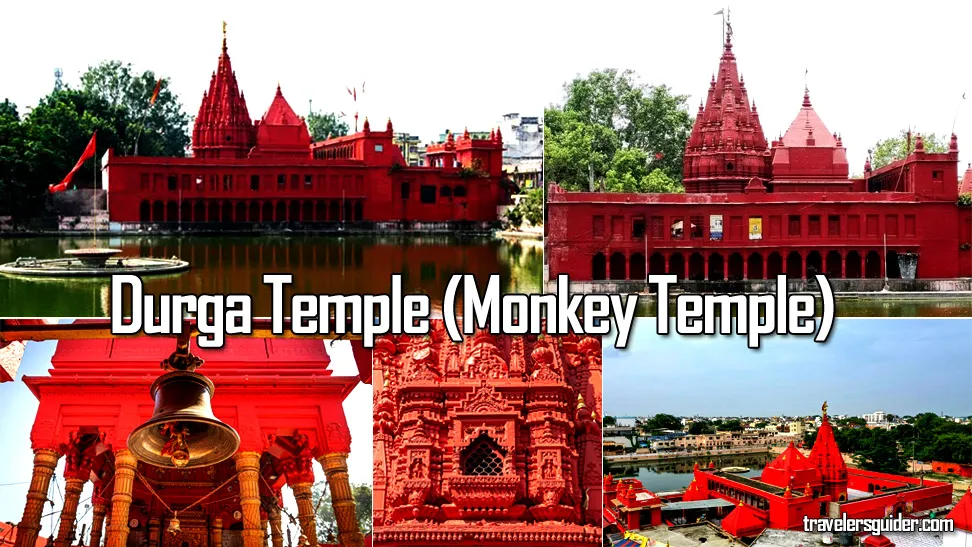
How to Reach: Located in the southern part of Varanasi, Durga Temple can be reached by auto-rickshaw, taxi, or cycle rickshaw.
Accommodation: Stay in a guesthouse near the southern ghats, like Ganga Love Luxe or Shiva Ganges View, for a peaceful retreat close to Durga Temple and the southern charms of Varanasi.
Conclusion:
Varanasi, with its spiritual resonance and historical significance, offers a kaleidoscope of experiences for travelers. Whether you seek the divine at revered temples, witness the timeless rituals along the ghats, or explore the cultural and educational gems, Varanasi beckons with open arms. Choose your accommodation wisely to enhance the immersive experience of this ancient city, and let the Ganges weave its tales of spirituality and serenity as you traverse the enchanting lanes of Varanasi. I hope, you will like all the places to visit in Varanasi, as I explained above.
FAQ
What are the must-visit ghats in Varanasi?
Dashashwamedh Ghat, Assi Ghat, and Manikarnika Ghat are iconic and popular ghats along the sacred Ganges River.
What is the significance of Kashi Vishwanath Temple in Varanasi?
Kashi Vishwanath Temple is dedicated to Lord Shiva and is one of the holiest temples in Hinduism, attracting devotees from around the world.
Are there boat rides available on the Ganges River in Varanasi?
Yes, boat rides are a popular way to experience the ghats and rituals along the Ganges. Sunrise and sunset boat rides are especially recommended.
What is the importance of Sarnath in Varanasi?
Sarnath is a significant Buddhist pilgrimage site where Lord Buddha delivered his first sermon after attaining enlightenment. The site features ancient stupas and a museum.
Are there any vibrant markets in Varanasi?
Yes, the bustling Vishwanath Gali and Thateri Bazaar are known for their vibrant markets offering silk products, traditional crafts, and religious items.
What is the best time to witness the Ganga Aarti in Varanasi?
The Ganga Aarti at Dashashwamedh Ghat takes place in the evening around sunset. It’s a mesmerizing ritual that attracts large crowds.
How can one explore the narrow alleys of Varanasi’s Old City?
Walking tours or cycle rickshaw rides are popular ways to navigate the narrow and winding alleys of Varanasi’s Old City.
Are there any historical landmarks in Varanasi?
The Ramnagar Fort, built in the 18th century, is a historical landmark situated on the eastern bank of the Ganges, known for its architecture and museum.
What role do the cremation ghats like Manikarnika Ghat play in Varanasi?
Cremation ghats like Manikarnika Ghat hold immense religious significance, and they are where Hindu cremation ceremonies take place.
Can one witness traditional music and dance performances in Varanasi?
Yes, Varanasi hosts various cultural events and performances, including classical music and dance, often held in ghats or cultural centers.

